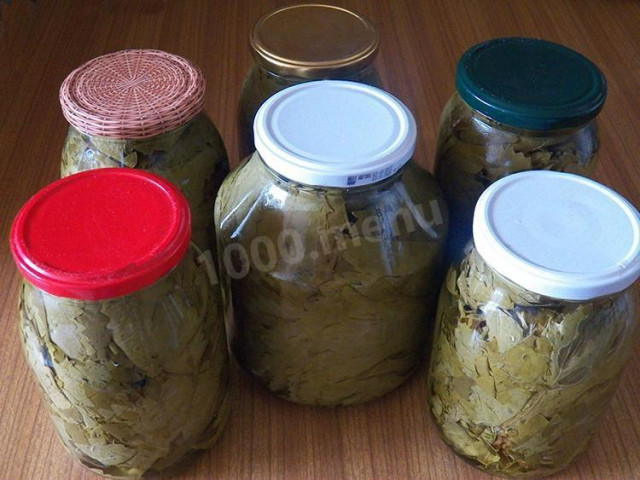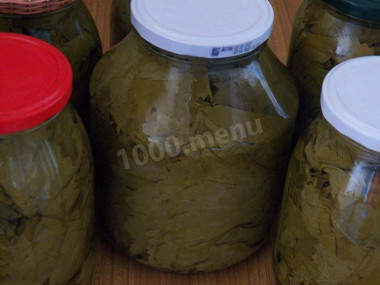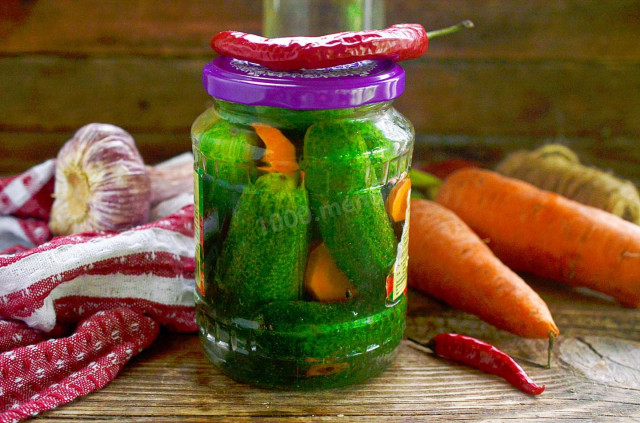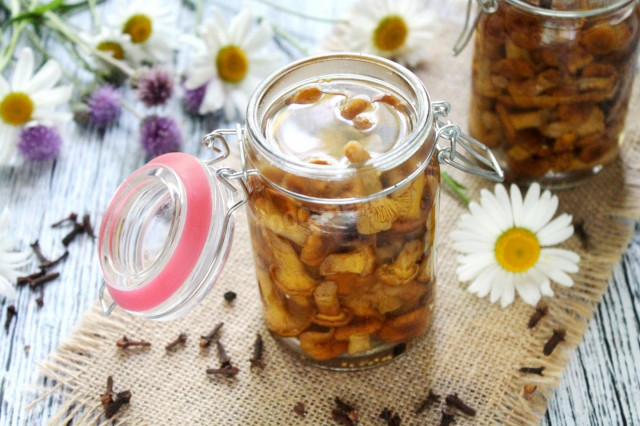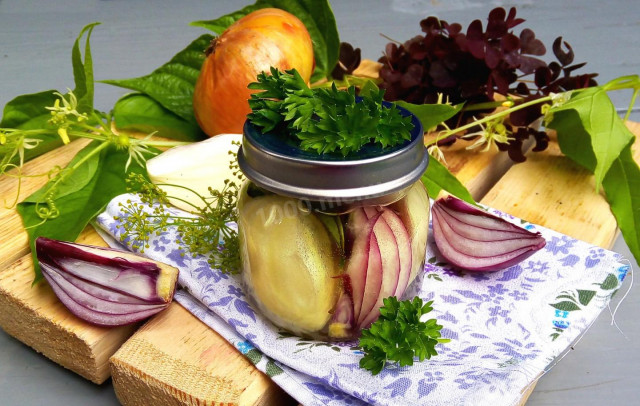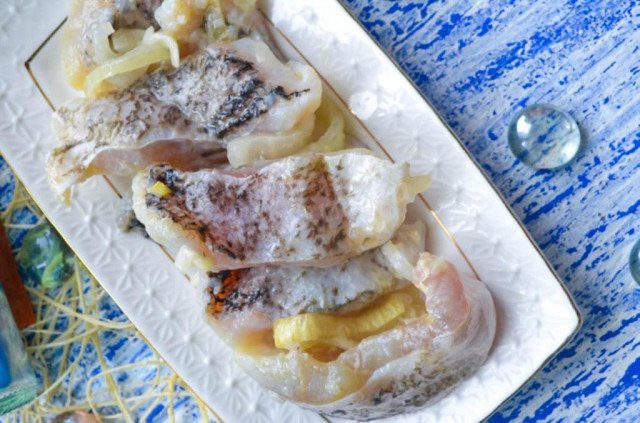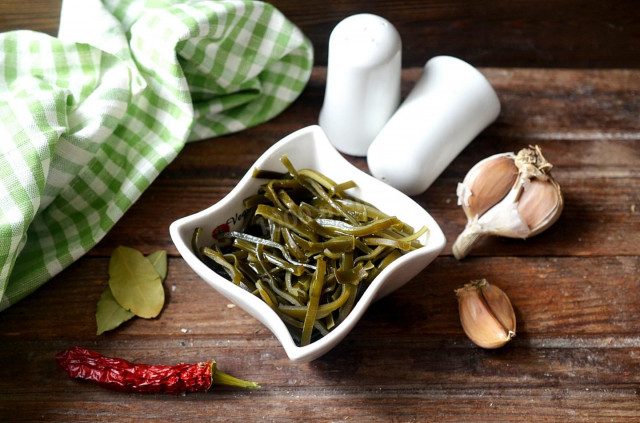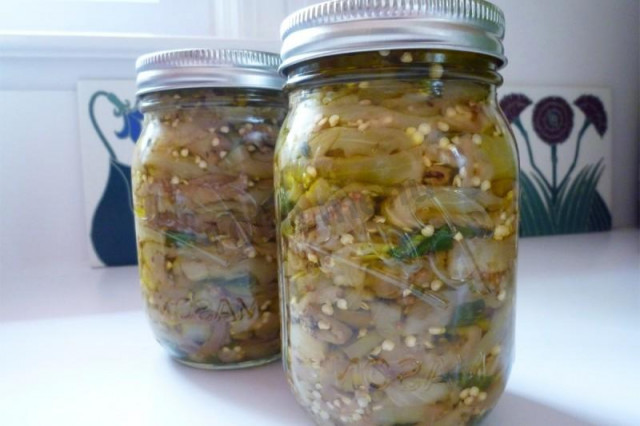Composition / ingredients
Step-by-step cooking
Step 1:
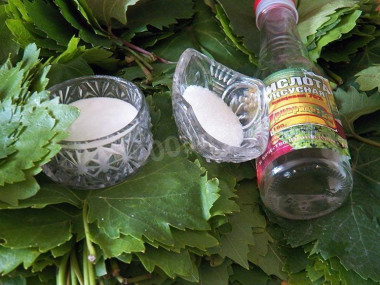
Ingredients
Step 2:
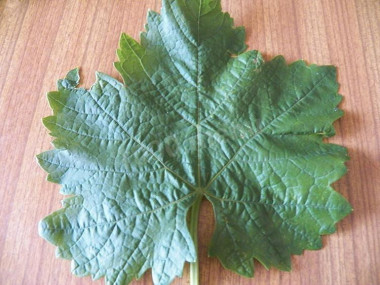
Open the sheet.
Step 3:
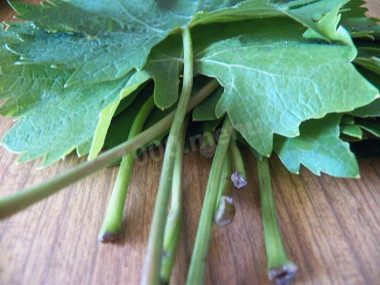
Overlay 10 sheets.
Step 4:
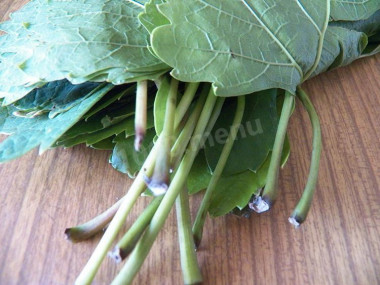
Flip.
Step 5:
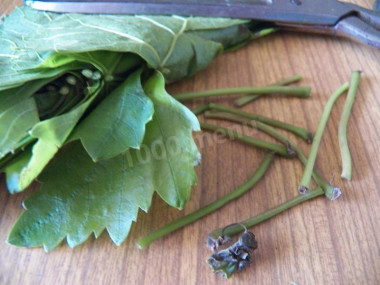
Cut the tails.
Step 6:
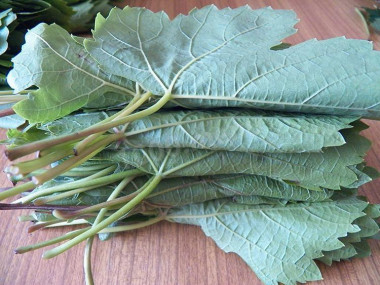
Stack bundles.
Step 7:
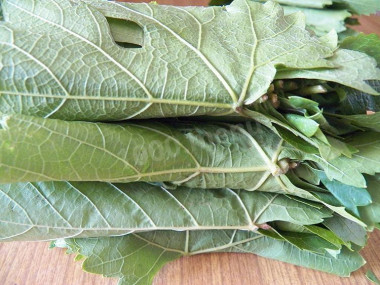
Bundles without tails.
Step 8:
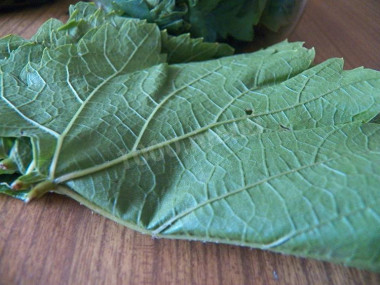
Wrapping process.
Step 9:
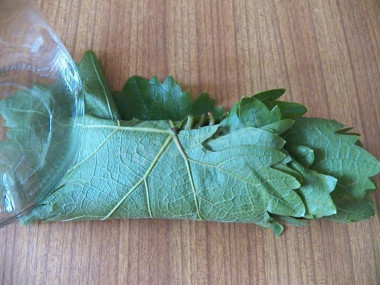
Wrapping process.
Step 10:
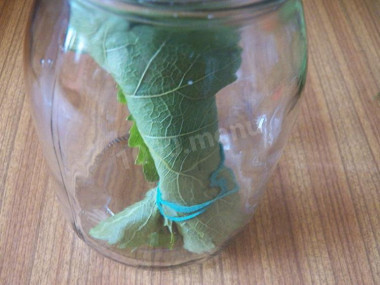
A bundle in a jar.
Step 11:
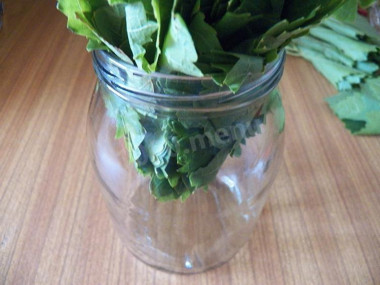
Put the stack in the jar.
Step 12:
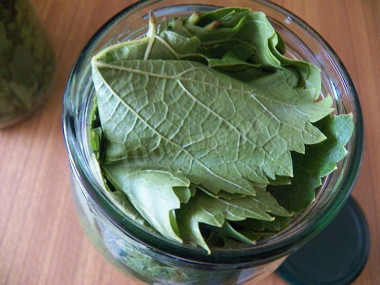
Jar with leaves.
Step 13:
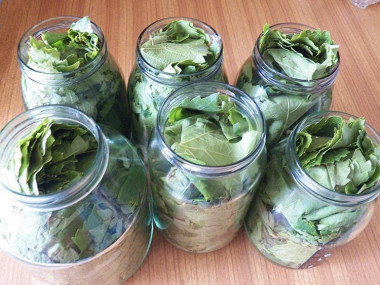
Banks are ready!
Step 14:
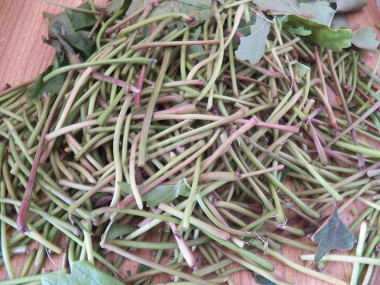
Still Life of ponytails :)
Step 15:
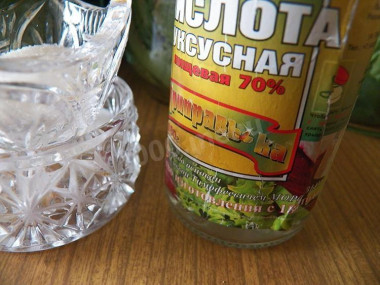
Marinade...
Step 16:
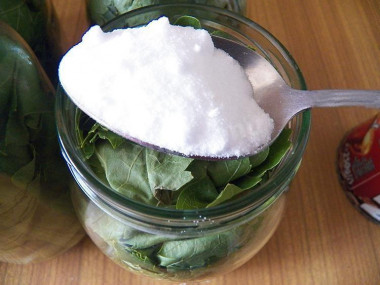
Add salt...
Step 17:
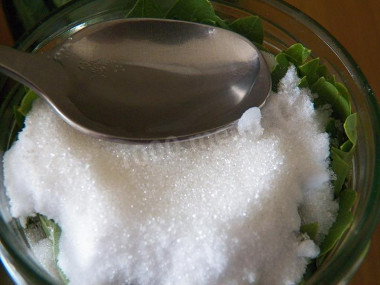
... sand and vinegar.
Step 18:
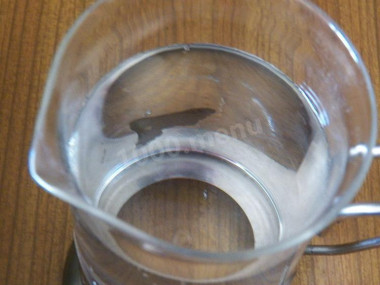
Boiling water...
Step 19:
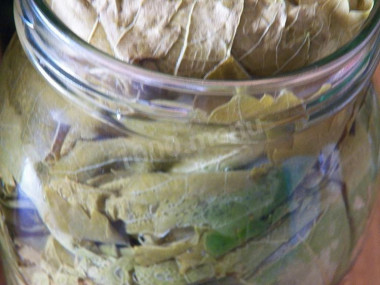
... pour into a jar.
Step 20:
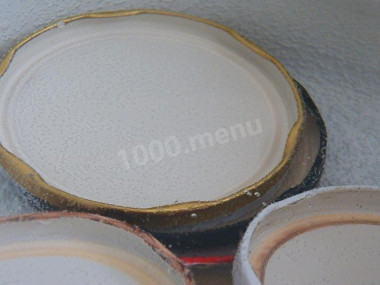
Prepare the covers.
Step 21:
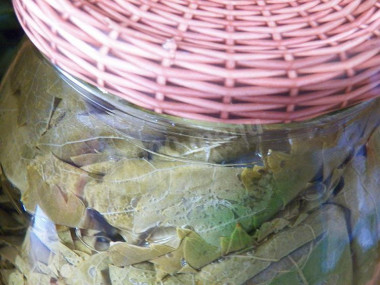
Close the lid.
Step 22:
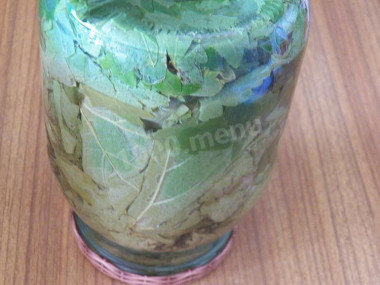
Flip.
Step 23:
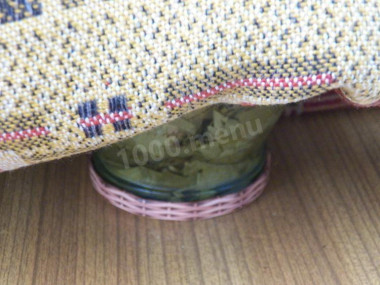
Cover with a blanket.
Step 24:
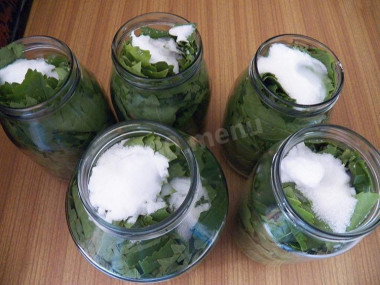
Step 25:
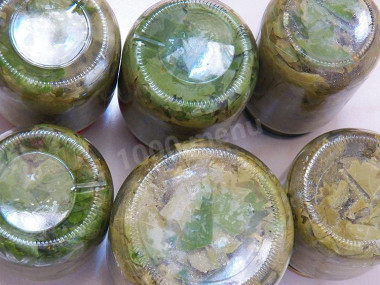
So, for harvesting we need fresh grape leaves, salt, granulated sugar, 70% acetic acid (in other words, essence) and boiled water.
Put a leaf on the table and put nine more leaves on it so that the tails are on top of each other. We will get a bunch of ten leaves (such an account is convenient when cooking a dish in the future). Turn the leaves on the side and cut the tails with scissors, as close as possible to the base of the leaf. Prepare 7-10 bundles in the same way.
Roll each bundle into a tube and wrap your fist around as many tube bundles as possible. So, holding a bouquet of leaves in your fist, push bunches of leaves into the prepared clean jar. If there is an empty space left in the bank, fill them with envelopes made of leaves.
Prepare the rest of the jars in the same way (you can use a different method at will).
In one liter jar filled with fresh grape leaves, put 1 tablespoon of salt (take a small one, a lot of iodine in a large one), 1 teaspoon of granulated sugar and 1 teaspoon of essence “without top". Stock up on boiling water and pour it into prepared jars. Be careful, water can linger on the “floors” of the leaves, creating a mirage of the fullness of the jar.
Seal the jar with a sterilized lid. Turn the jar over and cover with a warm blanket. After cooling, store the jars in a cool place.
For the sake of interest, I want to say that out of 2 kilograms of fresh leaves, 1 half-liter and 5 liter cans turned out. In winter, one jar of the finished product costs the price of 2 kg of fresh leaves purchased in the summer. There is a reason to think.
Caloric content of the products possible in the composition of the dish
- Granulated sugar - 398 kcal/100g
- Sugar - 398 kcal/100g
- Salt - 0 kcal/100g
- Water - 0 kcal/100g
- Acetic essence - 11 kcal/100g
- Grape leaves - 0 kcal/100g

